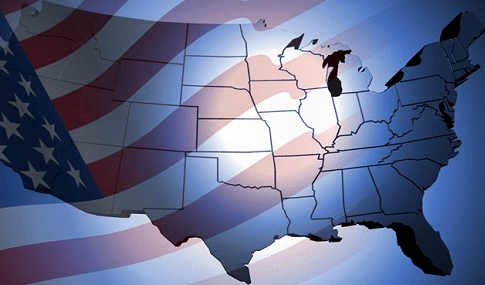Richard Florida, from the University of Toronto, had an opinion piece in the New York Times on Sunday, January 4 entitled, “Is Life Better in America’s Red States?” In it, Florida makes this initial observation about “red states”:
Red state economies based on energy extraction, agriculture and suburban sprawl may have lower wages, higher poverty rates and lower levels of education on average than those of blue states — but their residents also benefit from much lower costs of living. For a middle-class person, the American dream of a big house with a backyard and a couple of cars is much more achievable in low-tax Arizona than in deep-blue Massachusetts.
As with many sweeping generalizations, there’s a big issue with the author’s claim that poverty in red states is higher than in blue: it’s based on a 50-year-old U.S. Census Bureau definition of poverty that’s basically three times the cost of a subsistence diet and does not take into account the cost of living from state-to-state. That’s a big deal. The official poverty measure also does not take into account the value of the Supplemental Nutrition Assistance Program (SNAP) benefits—food stamps—nor housing subsidies. That’s also a big deal.
But, Census has developed a new measure of poverty and published it with state level detail for three years now. It accounts for the variable cost of housing and it includes the value of non-cash government entitlements, such as SNAP and Section 8 housing subsidies. Known as the Supplemental Poverty Measure, the Census’ calculations show that California has the nation’s highest poverty rate, with 23.4 percent of Californians living in poverty over the period 2011 to 2013. This is a per capita rate some 47 percent higher than in Texas, California’s closest demographic twin, which posted a poverty rate of 15.9 percent, the same as the national average.
That California taxes 52 percent more income on the state and local level than does Texas may be instructive here.
Further, much of the poverty rate around the nation is linked to demographics, the average age of a state’s residents, family size and composition, race, ethnicity, and national origin, all play a role in poverty numbers. Once these are controlled for, using the new, more comprehensive Census data, the divide between red and blue states becomes even wider — in the red states’ favor.
Looking at the final Electoral College map for the 2012 election, we see that the Obama/Biden ticket won 26 states and the District of Columbia while Romney/Ryan won 24 states. According to the U.S. Census, using the official poverty measure, the 26 blue states and D.C. had an average of 12.9 percent of their residents below the poverty line in the period 2009 to 2012 vs. 15.5 percent in the 24 red states, a difference of 2.6 percent in favor of the blue states. This would appear to support Mr. Florida’s contention.
Looking at the poverty levels for the three largest racial, ethnic or national origin groups sheds a different light on poverty. In the blue states, the average poverty rate for the white, non-Hispanic population was 8.7 percent vs. 11 percent in the red states, a difference of 2.3 percent.
Among African-Americans, the poverty rate was 26.4 percent in the blue states vs. 25.7 percent in the red states, a difference of 0.7 percent in favor of the red states.
Among Hispanics of Mexican national origin, the rate of poverty was 24.1 percent in the blue states and 29.8 percent in the red: advantage to the blue states by 5.7 percent.
But, using the Supplemental Poverty Measure as the yardstick at the state level shows an entirely different picture. Among all Americans, the blue state poverty level from 2009 to 2012 was 14.2 percent vs. 13.5 percent in the red states, turning the 2.6 percent blue state advantage in the traditional measure of poverty on its head to a 0.7 percent advantage for the red states when housing costs were considered in the newer poverty calculation.
Among Anglos, the supplemental poverty rate averaged 10.2 percent in the blue states vs. 10.6 percent in the red, a small distinction.
In the African-American population, the supplemental poverty rate was 24.4 percent in the blue states vs. 21.5 percent in the red states, expanding a red state advantage of 0.7 percent to an advantage of 2.9 percent.
Among Mexican-Americans the average blue state supplemental poverty rate was 25 percent vs. 22.3 percent in the red states, a huge swing of 8.4 percent in the red states’ favor using the new, more comprehensive measure of poverty.
Running a cost of living calculation for the 26 blue states and D.C. vs. the 24 red states shows that the average cost index for the blue states in 2013 was 112, with the U.S. average equaling 100, thus, the overall cost of living, before taxes, in the blue states was 12 percent more costly than the national average. The cost of living index in the red states was 95 percent.
The bottom line is that the cost of living matters quite a bit — and, cost of living doesn’t just happen in a vacuum. Public policy, from labor law to zoning restrictions to taxes all contribute to the cost of living in a state. As a general rule, conservatively-run states have a far lower cost of living than do liberal states and this lower cost of living greatly benefits the people who pay rent, buy food, and contract for service — a fact that is frequently glossed over by partisans who favor larger government as well as many analysts.
Chuck DeVore is vice president of policy at the Texas Public Policy Foundation and served in the California State Assembly from 2004 to 2010.

COMMENTS
Please let us know if you're having issues with commenting.